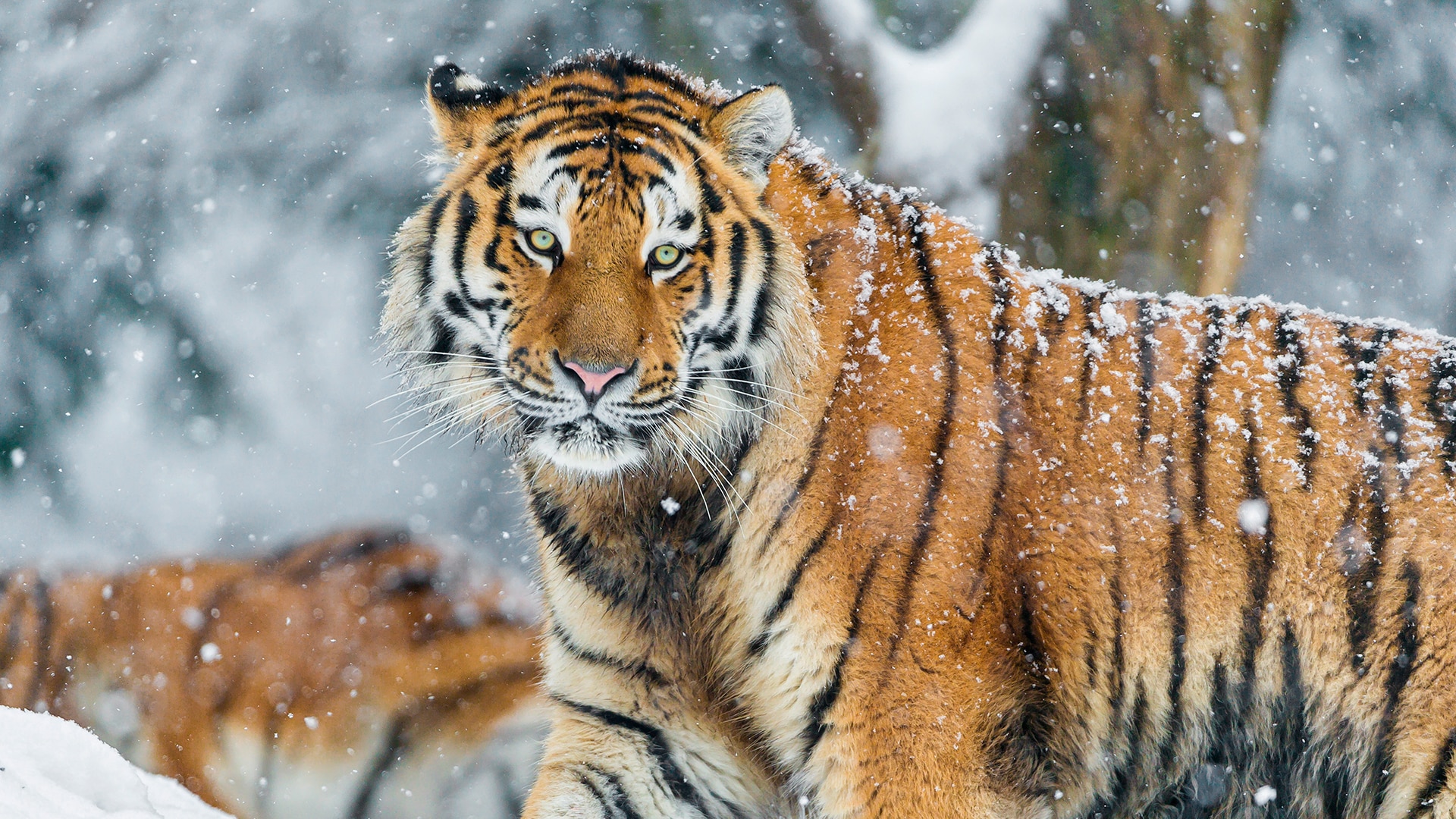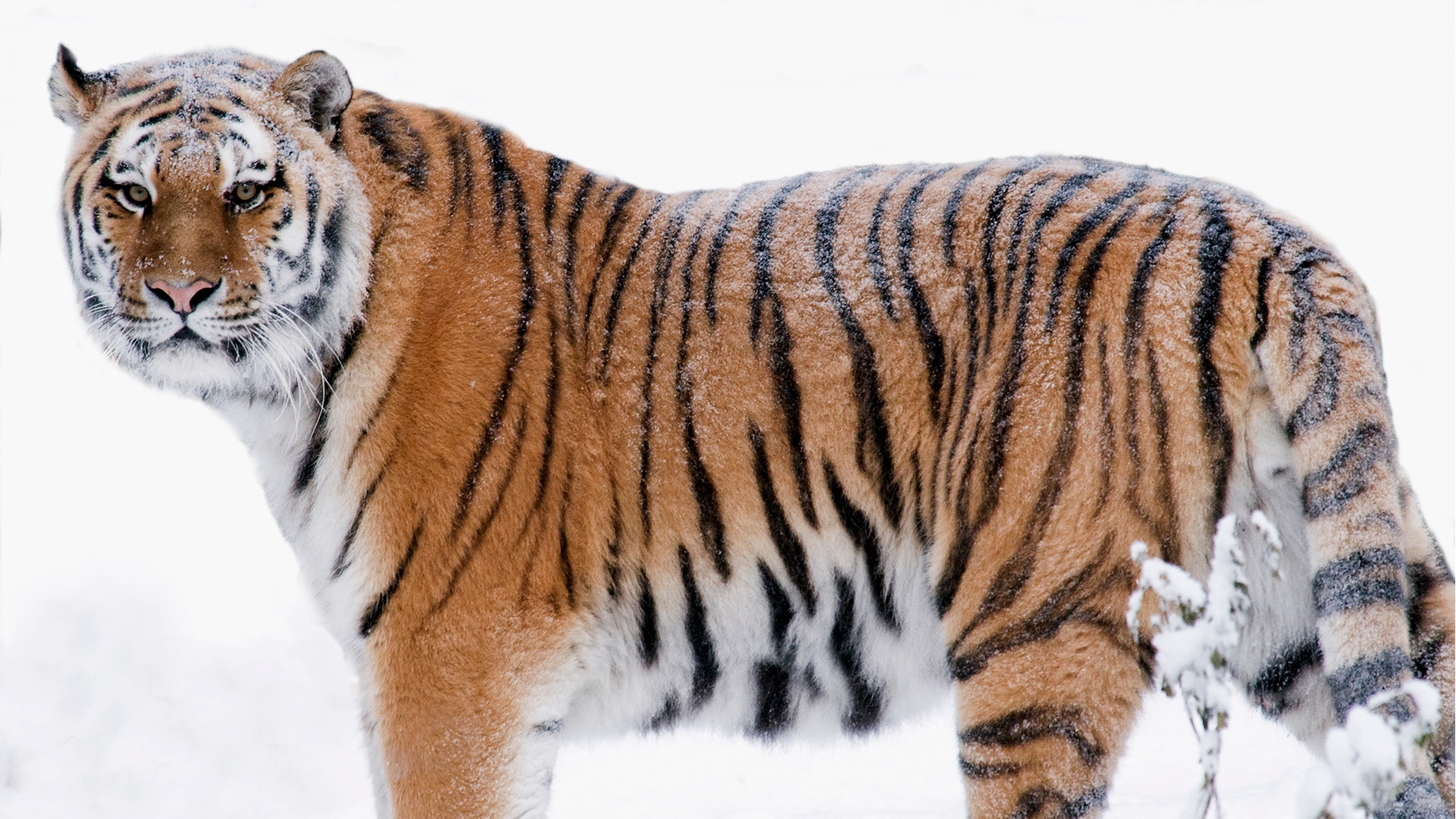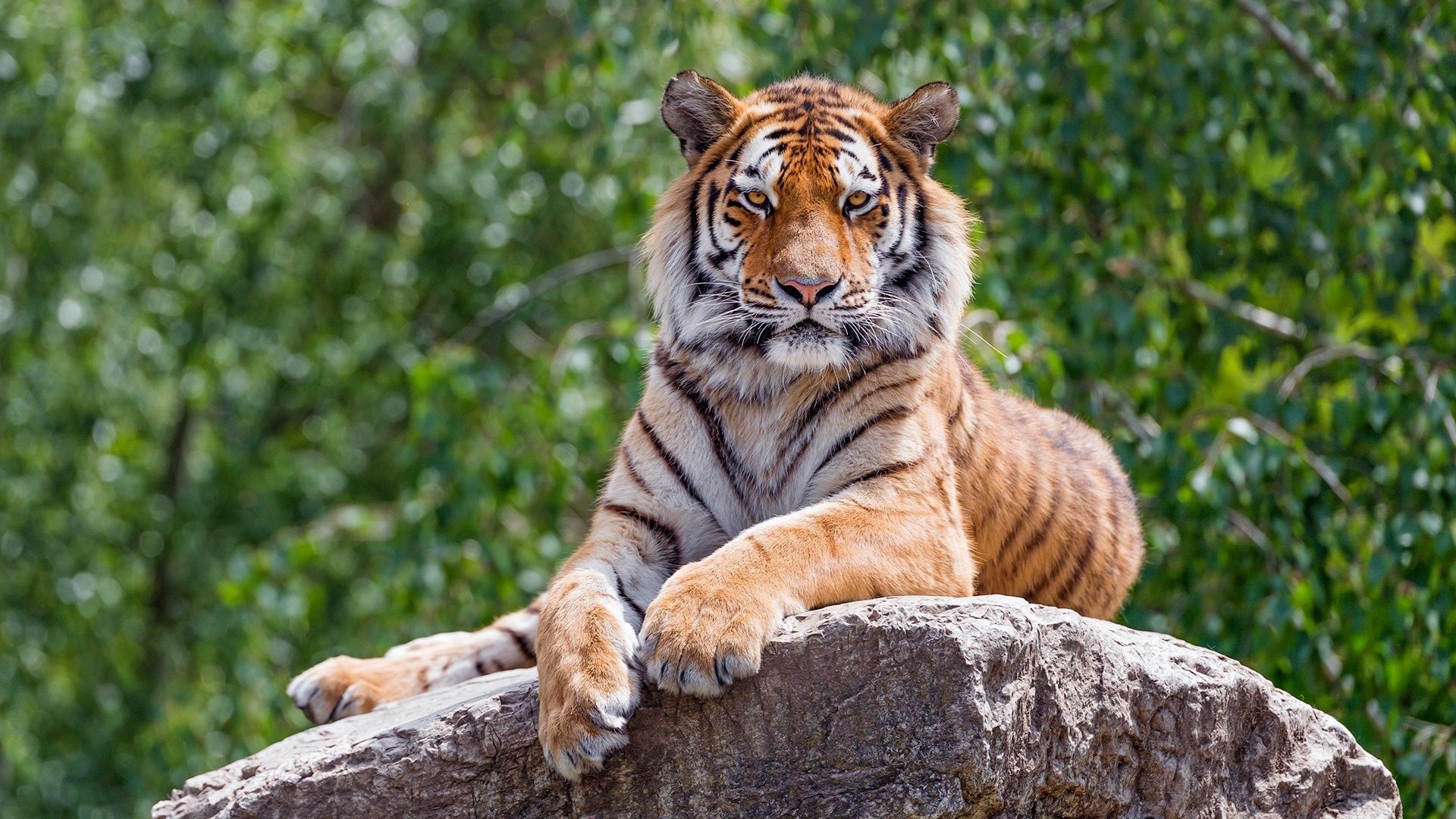BBC Earth newsletter
BBC Earth delivered direct to your inbox
Sign up to receive news, updates and exclusives from BBC Earth and related content from BBC Studios by email.
Animals
Once common in Siberia, it’s the biggest cat in the wild. But it also faces some enormous challenges.
In the 1940s, the Amur tiger (Panthera altaica) was on the brink of extinction, with only about 40 thought to be alive. In 1947, the Soviet Union took action by bringing in anti-poaching controls, and established a network of protected zones.1 Today, around 500 of these mighty beasts exist, mainly in eastern Russia’s vast birch forests, or taiga, as well as Northeast China.2 Whilst this is a positive increase – and numbers have remained relatively stable in recent years – the species remains on the endangered list. So why is that the case? And what can be done to save them?

Previously named the Siberian tiger, it is now more commonly known by the name of the river on the border of Russia and China where it is mostly found: the Amur.3
Built to survive the harsh conditions of the Russian winter, Amur tigers are larger than their counterparts, such as the Sumatran or the Bengal. To protect themselves against the freezing climate, their fur is thicker and longer. For even more insulation, they also boast a mane around their necks and extra fur on their paws. The distinctive orange fur we associate with tigers is less vivid in Amurs. During the winter months, its coat grows even lighter and its stripes thinner, to enhance their ability to camouflage amongst the trees.4
It may be an environment that’s far more challenging than those experienced by other tigers – nights can be as cold as -40°C! – but there are advantages to be had.
The remoteness of the location gives them freedom to roam. Humans are few and far between here, which means less habitat is lost through invasive logging (although illegal logging remains an issue). These tigers are also solitary and only group together to mate5; they’re elusive and expertly camouflaged, so tracking them can be fiendishly difficult. Whilst this offers them some protection against poachers, it does make the job difficult for conservationists and tiger specialist scientists.

According to one conservation group, at least 80% of Amur tiger mortality is down to humans.6 Despite conservation efforts and the strict hunting ban, animals are still killed for trophies. Their huge size makes them highly prized by hunters.
As well as the tigers themselves being hunted, the animals they usually prey upon – such as wild deer and boar – are also being poached. With their food sources reduced, female tigers are forced to look for alternative sustenance for the family, often resorting to hunting livestock and domestic pets. This closer proximity to humans puts them at risk of being killed in retaliation, as well as making them even more vulnerable to poaching.
As the cubs rely on their mothers for up to two years, the loss of one adult female can lead to the death of many more tigers.
But why are these creatures so attractive to poachers?
Once trapped, a tiger will be butchered, with the required parts smuggled across the Russian border into China for use in traditional medicines. Ailments as diverse as rheumatism, typhoid, malaria, dysentery, and rat bites are treated with parts of the tiger’s body. Even its whiskers are used: they’re worn as talismans, or protective charms.7

According to conservation group 'The Amur Tiger Centre', up to 70 tigers per annum were poached a decade ago. In recent years, concerted protection efforts have reduced the number to around 20.8 This group – and other conservation teams – patrol the tiger’s territory in armoured vehicles, seeking out poachers. The law in Russia has also been strengthened with tougher punishments for poachers and illegal loggers.9
Technology is playing its part, too. Infrared cameras can detect an animal and AI is used to determine its species, size and weight. That data is then stored for future study. Determining the population dispersal of the tigers can help to accurately identify their habitat and so protect them accordingly.10
Though the remoteness of Siberia keeps most humans at bay, increased industry and population growth has led to more roads being built through the tiger’s habitat.11 In response, eco-corridors have been established, connecting different tiger territories and allowing these solitary animals to move easily between them.12 And in one location, a half-kilometre-long “Tiger Tunnel” has been constructed, so they can safely traverse a road that cuts through their territory.13
There may well be a happy ending to the tale of the Amur tiger. Thanks to intense conservation efforts, technological advances, and increased awareness, the number of wild tigers in some areas of the world does seem to be rising. Russia is one example of this.14 It’s still early days, but the planet’s biggest cat in the wild might just be making a big comeback.
Featured image by © Andy Smith
1. Year of Russian tiger hunting ban , 2. Siberian tiger numbers , 3. Tiger name change 4. Siberian tiger characteristics , 5. Siberian tigers group together to mate , 6. Percentage of tiger mortality blamed on humans , 7. Tiger use in Chinese medicine , 8. Declining number of poached tigers , 9. Laws strengthened to deter poachers , 10. AI used to aid tigers , 11. Increase of roads being built through tigers’ habitat , 12. Eco corridors ,13. Siberian tiger tunnel ,14. Tiger numbers rising